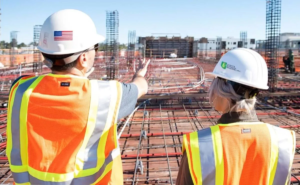Bathroom Remodeling Spring TX is an excellent way to update your home and increase its value at the same time. It can be anything from applying a new coat of paint to installing a whole new vanity and fixtures.

But what’s the difference between remodeling and renovating? And how do you know which option is right for you?
If you’re remodeling your bathroom, the layout of the space will have a major impact on its final look and functionality. This is true even if the “guts” of the bathroom (water hookups, plumbing drains, venting, etc) stay in place. That’s because changing the location of a toilet, bathtub, shower or sink requires altering the plumbing to accommodate the new configuration. This can be much more expensive than simply upgrading fixtures and is something that your general contractor will be able to guide you through.
If your budget doesn’t allow for a full remodel but you want to make some significant changes, consider what is called a ‘renovation.’ This is a less intensive version of a remodel where the basic structure stays in place but some wall and floor work might be altered. This allows for more flexibility when designing your new bathroom layout.
Another way to create a more functional bathroom is to organize the spaces into distinct zones like this example from designer Leigh Lincoln of Pure Salt Interiors. In this design, a vanity is positioned opposite the shower and soaking tub. This allows for a good amount of counter space, easy access to a recessed medicine cabinet and room for a large window to let in lots of natural light.
One thing to keep in mind when planning your bathroom layout is the amount of storage you’ll need for items like towels, extra toilet paper rolls, small toiletries and cosmetics, hot hairstyling tools and more. A well-planned storage area is important to minimize clutter, reduce the potential for mold and mildew and ensure that everything has a place.
Fixtures
Bathrooms are one of the most intimate areas in a home, but that doesn’t mean they have to be dull or outdated. A well-designed bathroom is not only relaxing and luxurious, but it’s also a big selling point for future buyers. Experts in bathroom remodeling can help you create the spa-like space of your dreams. They can also help you make practical upgrades to enhance functionality or add energy and water-efficient features.
The bathroom fixtures you choose are the finishing touches that tie together your overall design and help define your bathroom’s style. This includes the faucets, showerheads, sink, and tub. Bathroom fixtures are often an investment, so it’s important to choose high-quality materials and finishes. Choose fixtures with sleek designs to complement contemporary decor or opt for vintage or traditional styles to create a more classic look.
If you’re doing a complete remodel, the first thing to do is install new fixtures and plumbing. This is where the renovation really begins to take shape, and it requires a combination of precision, safety, and foresight. Before you start installing new plumbing fixtures, be sure to review the manufacturer’s installation instructions and ensure that you have all of the correct parts. For example, many shower controls and faucets have different handle options, so it’s important to match them properly.
A professional plumber can help you select the perfect fixtures for your bathroom. They can also walk you through the process of obtaining the necessary permits and coordinating with other contractors to keep the project on track. They can even help you choose a color scheme that will coordinate with the rest of your home’s decor.
Flooring
The flooring is a critical aspect of any bathroom, and the selection can make or break the overall look of the room. Depending on the desired aesthetic, Sydney homeowners can choose from a variety of floor materials that will fit their design vision and meet practical needs like durability and water resistance. This is an opportunity to weigh budgetary constraints, personal aesthetic preferences, and lifestyle considerations.
Demolition and drywall installation typically occur before installing the new flooring, and it’s important to use proper safety precautions when removing fixtures like toilets, tubs, and sinks. The demolition process can also reveal unexpected issues that need to be addressed, which may extend the project’s timeline. It’s a good idea to rent a dumpster for this stage of the project to ensure you have enough space to dispose of any hazardous materials.
Once the walls are ready, the tile and flooring can be installed. This is the final step before the bathroom starts to take shape and can be a messy part of the remodeling project. It’s crucial to have the right tools for this phase, including a hammer and sledgehammer to break down walls and knock out sections of tiles on the floor. A crowbar is also helpful for prying up stubborn cabinetry.
After laying the tiles, the floor needs to dry out before installing the grout. This can take a few days and requires patience, but it’s essential for the longevity of the bathroom flooring. For homeowners looking for a quicker installation time, epoxy floors are a great option because they can be poured and dried in one day. Another option is cork, which is a popular choice because of its comfort and sustainability. Made from the bark of cork oak trees, this material is environmentally responsible and highly water-resistant.
Lighting
When it comes to installing new lighting, fans and mirrors, it’s important to think about both style and function. Fans should be selected based on room size and noise level, while mirrors are available in many shapes, sizes and finishes to match your bathroom design. Finally, it’s also a good idea to install accessories like towel bars and toilet paper holders.
The installation phase is when the bathroom remodeling project really starts to take shape. It’s the stage where design plans transition from paper to the actual space, and it’s a time when attention to detail is paramount. Careful installation ensures that all components are set up properly and work as intended. It’s a process that requires a combination of craftsmanship, precision and coordination to create the perfect bathroom.
Surface-Level Remodel
Adding a fresh coat of paint, changing out cabinet hardware or replacing a vanity top can give your bathroom an entirely new look for a relatively low cost. This type of remodel is often less involved than a full renovation, and can be completed in one to two weeks by a professional contractor.
Replacement Remodel
If you want to replace the existing shower, bathtub, toilet and vanity with new products, this is a great option for an updated look. It can also be more cost effective than a full renovation because it doesn’t involve moving around plumbing fixtures and electrical wiring.
A full renovation is a complete gut and rebuild of the entire space. It’s a major undertaking that involves tearing down walls, changing the layout and making structural changes. This type of remodel can be more expensive than a surface-level renovation, but it’s an excellent choice for those who want to completely transform the space and make it truly their own.
Accessories
Once you have determined the layout, created storage solutions and completed any major surface changes like tiling or replacing your bathtub with a walk-in shower, it’s time to accessorize your new bathroom. This is where the fun part of creating a bathroom design begins, as you can add in unique elements that speak to your personal style. From soap dispensers to toilet paper holders, there are many ways to bring your vision for the perfect bathroom to life.
Before you start selecting your accessories, it is important to fully declutter the space and remove all existing items. This will ensure that you can work on the underlying infrastructure without the risk of tripping over or knocking down anything important. It is also a good idea to mark where plumbing pipes and electrical wiring are located so that you do not damage them during your remodeling project.
You’ll also want to choose accessories that are durable enough for the moist environment of a bathroom. This is why choosing high-quality materials is so important. This will prevent your accessories from becoming damaged or prone to mold and mildew growth over time.
When choosing color, it is best to go with neutrals or soft tones, as these are less likely to clash with your other décor. However, don’t be afraid to be bold with your accessories; hanging a piece of art that speaks to you or repurposing a vase for storage can give your bathroom a unique flair that makes it feel truly yours.
